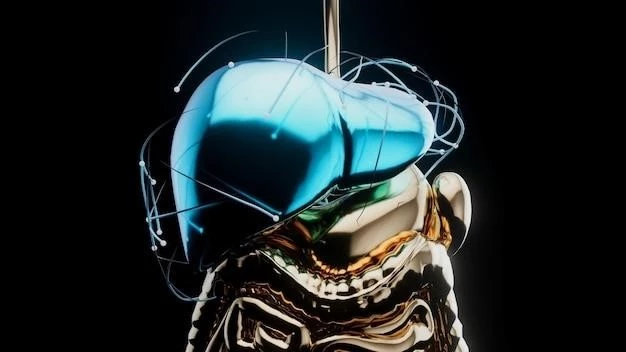Symptoms of Biliary Hypoplasia
Jaundice
Jaundice, a common symptom of biliary hypoplasia, manifests as yellowing of the skin and eyes due to high bilirubin levels in the blood. This occurs when the liver cannot process the pigment properly, leading to its buildup in the bloodstream.
Poor weight gain
Poor weight gain is often observed in individuals with biliary hypoplasia due to inadequate absorption of essential nutrients. The liver’s inability to produce sufficient bile impacts the digestion and absorption of fats, leading to malnutrition and hindered weight gain.
Enlarged liver or spleen
Biliary hypoplasia can result in an enlarged liver or spleen, known as hepatosplenomegaly. This enlargement occurs due to the liver’s reduced bile production and impaired function, leading to the accumulation of substances within these organs, causing them to increase in size.
Dark urine
Dark urine is a symptom of biliary hypoplasia caused by elevated levels of bilirubin in the blood. The inability of the liver to process bilirubin leads to its excretion through the urine, giving it a dark color. This can be a sign of compromised liver function.
Causes of Biliary Hypoplasia
Genetic factors
Genetic factors play a crucial role in the development of biliary hypoplasia. Mutations or abnormalities in specific genes involved in liver and bile duct development can predispose individuals to this condition. Understanding the genetic basis is essential for diagnosis and treatment.
Developmental abnormalities
Developmental abnormalities, such as improper formation of the bile ducts or liver during fetal development, can contribute to biliary hypoplasia. These structural defects can impair the liver’s ability to produce and transport bile effectively, leading to the development of this condition.
Infections during pregnancy
Infections during pregnancy, especially those affecting the liver or bile ducts, can increase the risk of biliary hypoplasia in the developing fetus. Maternal infections that impact the fetal liver’s development or bile flow can be a significant contributing factor to the occurrence of this condition.
Treatment Options for Biliary Hypoplasia
Medications to improve bile flow
Medications aimed at enhancing bile flow are often prescribed to individuals with biliary hypoplasia to support liver function and assist in the digestion of fats. These medications can help alleviate symptoms and improve overall liver health by facilitating the proper flow of bile.
Surgical interventions
Surgical interventions are crucial in the management of biliary hypoplasia, aiming to improve bile flow and liver function. Procedures like Kasai surgery or liver resection may be performed to alleviate symptoms and prevent further complications associated with this condition.
Liver transplant
Liver transplantation may be recommended for severe cases of biliary hypoplasia where other treatments have been ineffective. This surgical procedure involves replacing the damaged liver with a healthy donor liver to restore proper liver function and improve the patient’s quality of life.
Diagnosis of Biliary Hypoplasia
Blood tests
Blood tests are crucial in the diagnosis of biliary hypoplasia, as they help evaluate liver function and detect any abnormalities in bilirubin levels. Tests like liver function tests and bilirubin levels can provide essential information to aid in diagnosing and monitoring this condition.
Imaging tests (ultrasound, MRI)
Imaging tests such as ultrasound and MRI are valuable diagnostic tools for assessing the structure and function of the liver and bile ducts in biliary hypoplasia. These non-invasive imaging techniques provide detailed images that aid in confirming the diagnosis and determining the extent of the condition.
Liver biopsy
A liver biopsy is a diagnostic procedure where a small tissue sample is taken from the liver to assess its condition and determine the presence of biliary hypoplasia. This procedure provides valuable insights into liver health, helping confirm the diagnosis and guide treatment decisions.
Complications of Biliary Hypoplasia
Liver failure
Liver failure is a severe complication of biliary hypoplasia, where the liver can no longer function adequately. This life-threatening condition can lead to a range of serious health issues and requires immediate medical attention to prevent further complications.
Malnutrition
Malnutrition is a common complication of biliary hypoplasia due to poor absorption of essential nutrients. The impaired bile flow affects digestion, leading to inadequate absorption of fats and fat-soluble vitamins. Proper nutritional support is essential to manage malnutrition in these individuals.
Increased risk of infections
Individuals with biliary hypoplasia may face an increased risk of infections due to compromised liver function and poor immune response. The reduced bile flow can impair the body’s ability to fight off infections effectively, making them more susceptible to bacterial or viral illnesses.
Biliary Hypoplasia in Infants
Neonatal cholestasis
Neonatal cholestasis, a form of liver disease in infants, can be a sign of biliary hypoplasia. It presents with jaundice, dark urine, and liver enlargement. Early detection and management of neonatal cholestasis are crucial to address underlying conditions like biliary hypoplasia.
Failure to thrive
Failure to thrive is a common concern in infants with biliary hypoplasia, characterized by inadequate weight gain and growth. The condition’s impact on nutrient absorption can lead to poor development. Early intervention and nutritional support are essential to address this issue and promote healthy growth.
Early intervention strategies
Implementing early intervention strategies is crucial in managing biliary hypoplasia in infants. Timely diagnosis, nutritional support, and appropriate medical interventions can help improve outcomes and mitigate the potential complications associated with this condition, ensuring optimal health and growth.

Surgery for Biliary Hypoplasia
Kasai procedure
The Kasai procedure, also known as hepatoportoenterostomy, is a surgical intervention performed in infants with biliary hypoplasia to improve bile flow and prevent further liver damage. This procedure involves creating a bile drainage system to alleviate cholestasis and delay the need for liver transplantation.
Liver resection
Liver resection, a surgical procedure where a part of the liver is removed, may be considered in biliary hypoplasia cases to address localized liver issues. This procedure aims to preserve healthy liver tissue and improve overall liver function in individuals with specific liver lesions or complications.
Liver transplantation
Liver transplantation is a definitive treatment for end-stage biliary hypoplasia when other interventions fail. This surgical procedure involves replacing the diseased liver with a healthy donor liver to restore proper liver function and improve the patient’s quality of life.
Prognosis of Biliary Hypoplasia
Factors influencing prognosis
Various factors influence the prognosis of biliary hypoplasia, including the extent of liver damage, response to treatment, and presence of complications. Early diagnosis and appropriate management significantly impact the long-term outlook for individuals with this condition.
Long-term outcomes
The long-term outcomes of biliary hypoplasia vary depending on the severity of the condition, the effectiveness of treatment, and any associated complications. Regular monitoring, adherence to medical recommendations, and appropriate interventions can help improve long-term outcomes and quality of life.
Follow-up care and monitoring
Regular follow-up care and monitoring are essential for individuals with biliary hypoplasia to track the progression of the condition, assess treatment efficacy, and detect any potential complications. Consistent medical supervision and evaluations help optimize outcomes and quality of life.
